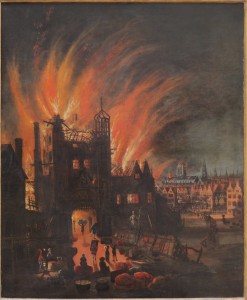 This post was kindly written for us by Caitlin Brown, one of our interns via the Leicester University / IHR Digital programme.
This post was kindly written for us by Caitlin Brown, one of our interns via the Leicester University / IHR Digital programme.
I decided to use Connected Histories to research an area that I knew something about, but that I would like to investigate more. I picked the Crimean War as I had studied it from a Russian perspective but not from a British point of view, and I knew Connected Histories provided links to British Newspapers, 1600-1900. I used keywords such as ‘Crimea’ and narrowed down the date to between the 1850s and 1860s, as I wanted perspectives of the situation from both before and after the conflict. A problem I noticed straight away was that while many of the results were from British Newspapers, this was a resource that was restricted. This meant that these results were impossible to access from the IHR. However, if I had been researching from my own University Campus which has a subscription to British Newspapers, I would have been able to look at these resources. Apart from the newspapers and a picture from the British Museum, there were a limited number of resources available to investigate this topic further. I wondered if this was because I had selected a topic towards the end of the time period covered. Therefore, I decided to use the same methods as before, but instead investigate a topic firmly within the time period covered by Connected Histories.
I changed my topic to the Great Fire of London, and, using the date filters and the use of keywords, I searched ‘1666’ and ‘fire of London’. These results were more useful, as they were not all from restricted resources which required a separate login. Lots of results were thrown up, particularly when I narrowed the dates down to a few years around the actual date of the Fire of London (1666). A particularly useful resource I found was John Strype’s ‘A Survey of London and Westminster’, which not only accounts for the state of London, but also talks about the damage that the fire created, as well as Parliamentary acts that were put into place to deal with the damage created by the fire. It also gives specific numbers about what was damaged in the fire; for instance, 12,000 houses were burned down. Not only was this useful for learning more about the fire, it was a source I had not heard of before but was one that would be extremely useful in investigating London as a whole in this period. Similarly, I found a Dutch etching which portrayed the fire itself and its permeation throughout the city. Another resource I discovered through Connected Histories was a link to British History Online, which has several Journals of the House of Commons. This provided purely parliamentary perspectives on the handling of the impact of the Fire of London, for instance compensating people whose houses had to be blown up to prevent a further spread of the fire.
A problem I noted during both searches was that due to the process involved in putting some documents online, they were often unreadable and therefore not very useful. Also, sometimes the search engine can be slow, as it has a lot of information to process. Overall, using Connected Histories as a starting point for researching a particular subject is very useful, as it provides a wide range of sources. Some areas are more difficult to look into when you cannot access the restricted content, however this would not always be an issue, depending on location. There is some limitation in the amount of sources, but even these provide a stepping point by which to continue research.
